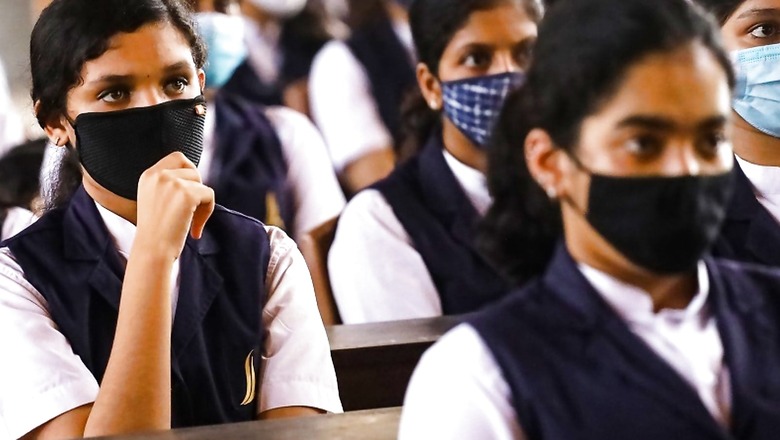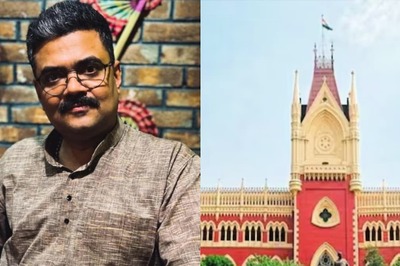
views
In November 2021, the National Crime Records Bureau (NCRB) in its annual report shed light on an alarming statistic –31 children committed suicide in India every day in 2020. In August, 2021, the consolidated data presented before Parliament stated that between 2017 and 2019, over 24,000 children in the age group of 14-18 years committed suicides. Of this, over 14,000 or more than 54% were girls.
While the causes listed in the report such as family problems, hero-worshipping, unemployment do tell us about the factors at play, they do not paint the complete picture. Mental health problems in India are not usual dinner table conversations making them more difficult to be mapped and tackled.
The situation worsened during the COVID-19 pandemic as people were locked within the confines of their homes for longer durations, adding more psychological duress. The problem among children became more pertinent as they were forced to adapt to the twin problems of staying at home as well as transitioning to the digital media of education.
As schools shifted to the online modes of education, the burden and stress of coping with a completely new medium deeply impacted the psychological health of students. Children below the age of 12, who are still at a more developing stage in terms of cognitive abilities, were found struggling on most occasions.
There were numerous cases of suicides among school-going children as their parents could not afford smartphones or computers to facilitate their schooling needs. This once again points out the deep-rooted socio-economic divisions in our country, which percolate into the lives of children, forcing them to combat circumstances that otherwise are not conceivable.
Therefore, mental health consciousness must be generated among children from an early age through pedagogies that focus on social and emotional well-being and not just academics and marks. Children must not be seen only as contributors to the country’s human capital formation but as the harbingers of our future.
One such pedagogical model is Social, Emotional and Ethical (SEE) Learning. The programme was developed by Emory University, the US, in collaboration with the Dalai Lama, and is based on advances made by the earlier Social and Educational Learning (SEL) community. SEE Learning recognises that humans are biologically built as social animals and is being used in schools in India such as Vega Schools, Shelford Group of Futuristic Schools, Parvarish – The Museum School.
Further, it is already used in other countries such as the US and Canada.
Learning through such models, including the SEE Learning problem, exposes students to the intricate contours of mental health, psychological functioning, and the need to harness both. Such pedagogies imbibe the value of evolution over progression, spiritual over the material. Students are encouraged to engage with moral questions through the lens of compassion. The idea is to inculcate SEE Learning not just into curriculums but into the culture of the school itself.
Through this, one hopes to create students who will go on to create a society that is more equitable, kind and just. At the same time, they would also realise that competition is just one way to look at life, and on most occasions, it is more detrimental than it is beneficial.
ALSO READ | In 2022, Stop Worrying about Reading, Writing, Maths and Help Kids Cope with Their Feelings
While suicides, according to the Diagnostic and Statistical Manual of Mental Disorders, is an outcome or a function of trauma that is cavernous, its roots are very much located in the social health of a country.
“In a country like ours, where there are substantially more suicide deaths each year than AIDS-related deaths and maternal deaths (45,000) combined, suicide prevention has attracted considerably less public health attention. Nonetheless, a public health approach to suicide prevention is gaining momentum in India,” reads a study by the medical journal The Lancet.
However, a recent highlight has been the Mental Health Act, 2017, through which there have been moves to decriminalise suicide. A pivotal next step will be to carry this momentum towards the development of a national suicide prevention plan. The National Education Policy, 2020, too, has NEP 2020 has given importance to SEE Learning and 21st-century life skills for the holistic development of students.
Another important facet of suicide prevention among children is the role played by their parents in creating an environment at home that is open, accepting, and believes in critique over criticism. Through SEE Learning, parents can also be encouraged to guide their child’s ethical and mental growth by asking thoughtful questions, recalling illustrative stories, and engaging in regular dialogues.
It is not a new phenomenon that most students in India leave schools better prepared to crack exams than they are to understand the importance of mental health. Though this is a reason enough for concern, the cauldron of pressure the system creates on students impedes their overall growth by acting as a barrier in helping them comprehend their mental health issues. Hence, it is time Indian educators expand their scope of education and look at alternative models and methods of development that go beyond the reliance on marks and progress.
The author is the managing trustee at Max India Foundation. The views expressed in this article are those of the author and do not represent the stand of this publication.
Read all the Latest Opinions here



















Comments
0 comment